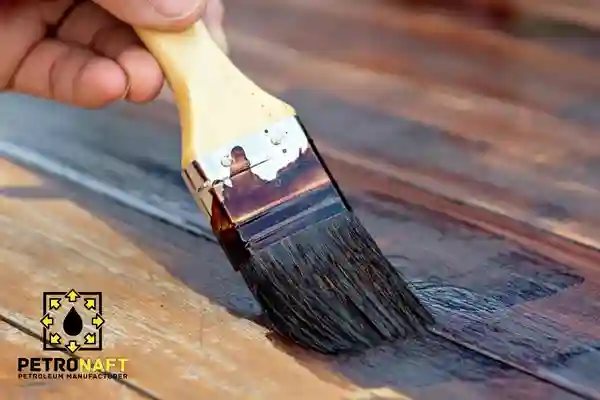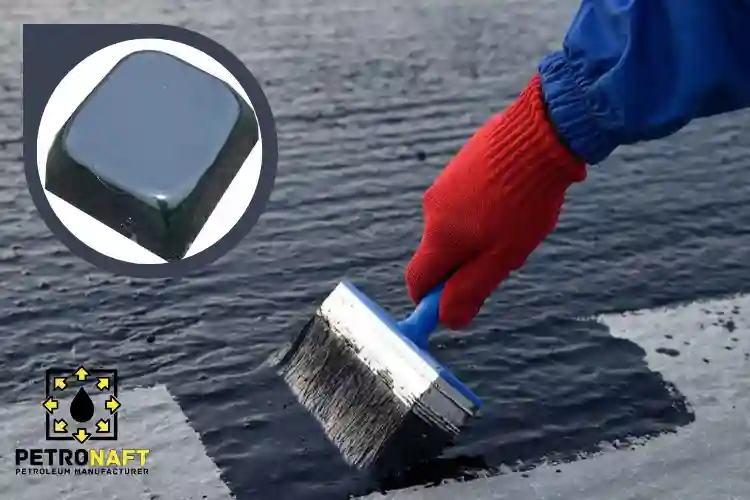Bitumen vs. Tar: Disentangling the Common Misconception
The question, “Is bitumen the same as tar?” is one of the most common misconceptions in the construction and industrial sectors. While both materials exhibit similar characteristics such as a dark, viscous appearance, and are used in similar applications, they are fundamentally different in terms of their origin, composition, and environmental impact. This article offers an in-depth exploration of these differences to dispel the confusion surrounding bitumen and tar.
1-Bitumen:
Bitumen is a semisolid or solid, black, tacky, and ductile material formed as a significant byproduct of petroleum distillation.
Bitumen refers to a class of hydrocarbons that are often combined with organic materials. In its liquid condition, it is known as petroleum, in its semifluid state as mineral Tar, and in its solid state as asphalt. You will get familiar with the features of Bitumen and the answer to the question “IS BITUMEN THE SAME AS TAR?”
Characteristics of Bitumen:
- It is often solid or semi-solid, black, and adhesive.
- It melts or softens when subjected to heat.
- It has a specific gravity of 1.09
- It’s fully soluble in carbon disulfide.
- It is utilized as a binder in all asphalt kinds (Bitumen 60/70 is the most common).
- It has a high level of chemical stability, but is damaged by oil.
- Low permittivity and strong insulating resistance characterize this material.
- By adding Gilsonite to Bitumen, some of its good qualities may be enhanced.
Uses:
- It is used as a damp-proof course in walls and below basements, as well as in the lining of tanks, swimming pools, urinals, etc.
- Due to the fact that it makes an excellent expansion joint, it is utilized to cover the gaps in leaking roofs.
- It is widely utilized as a material for road construction (Bitumen 60/70 is the most common kind).
- It is used to manufacture building insulation products.
- It is also used in the production of roofing felt, impermeable paints, and bituminous polymers that are cold-molded. The asphalt is colored with red, green, or brown pigments to create bituminous paints. These paints are useful for waterproofing and decorating floors.
2-Tar:
Tar is a dark, solid substance produced by the destructive distillation of coal, peat, wood, or other organic matter. It comprises 75 to 95 percent bituminous material. It has a greater proportion of carbon.
Generally, the qualities of Tar depend on the kind of raw material used in its production, the technique of distillation, and the number of residual materials integrated.
It hardens much faster than asphalt. It adheres better than asphalt. It contains a high level of toxicity.
According to the American Society of Testing Materials, Tar is a black or dark-brown bituminous condensate that provides significant quantities of pitch when practically evaporated or fractionally distilled, and is obtained by destructive distillation of organic materials such as coal, oil, lignite, peat, and wood.
It is a byproduct of bituminous coke production and is soluble in carbon disulfide.
Uses:
- It is used for roofing and road construction.
- It is used in the production of bituminous paints and waterproofing compounds.
- Coal Tar is used as a wood preservative.
- It is used for painting the walls of latrines.

3-Difference Between Bitumen and Tar:
S.N. | Bitumen | Tar |
1 | It is often sturdy. | It is a thick liquid. |
2 | It is deep black. | It’s pitch dark. |
3 | It has a modest level of toxicity. | It contains a high level of toxicity. |
4 | It has greater adhesion. | It is quite sticky. |
5 | It has a considerable amount of carbon. | It has a significant proportion of carbon. |
6 | It is more water- and acid-resistant. | It is less water and acid resistant. |
7 | It sets rapidly. | It sets gradually. |
8 | When it is distributed, it loses volatile stuff gradually and thus solidifies gradually. | Spread out, it loses volatile materials at an accelerated pace and hence solidifies rapidly. |
9 | It happens naturally | It is manufactured through distillation. |
10 | It is generated from coal and oil-related sources. | It is derived from oil, coal, and wood. |
11 | It is quite durable. | It is not as durable as bitumen. |
12 | It is very resistant to the elements. | It has a rather poor resilience to the elements. |
13 | It causes less degradation than tar. | When exposed to weather conditions, degradation is accelerated. |
14 | The specific gravity is low. | It has the greatest specific gravity. |
16 | It makes the surface more slippery. | It generates a surface that is less slippery. |
17 | It is low in viscosity. | It is quite viscous. |
18 | It is a costly item. | It is a bargain. |
4-Conclusion:
The usage of Bitumen or Tar is contingent on factors like as strength, durability, cost, etc.
Bitumen is more flexible, robust, and chemically resistant. Therefore, from a quality standpoint, Bitumen is the best.
Tar is more economical than Bitumen, economically speaking.
Now, could you respond to the following question: “IS BITUMEN THE SAME AS TAR?” given your knowledge of Bitumen and Tar, as well as each substance’s characteristics and applications, Send us your feedback if you would.
Purchasing from Petro Naft
For more detailed information and to purchase the product discussed in this article, please visit the dedicated product page below. Alternatively, use the various communication channels provided on our site to register your purchase inquiry or take advantage of our expert guidance.
Prepared by the PetroNaft Co. research team.

